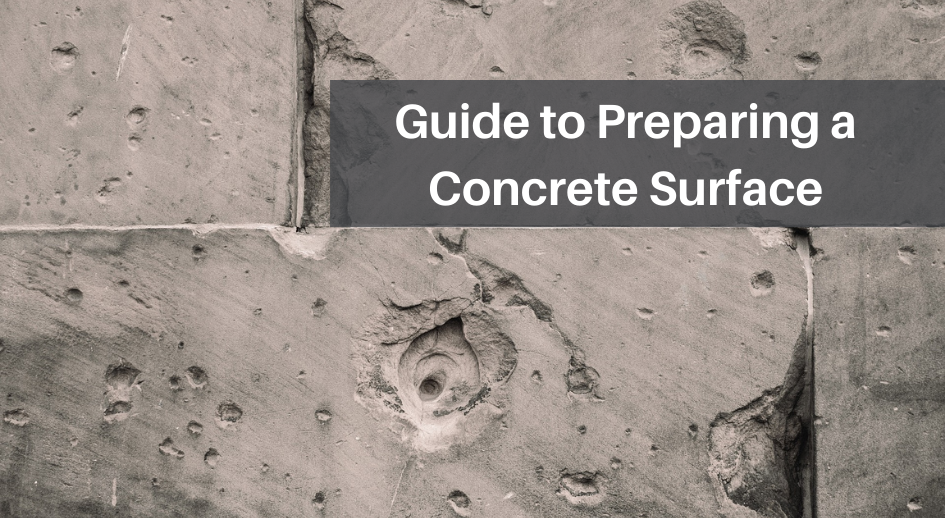
A Complete Guide to Preparing a Concrete Surface
Updated: December 22, 2023When it comes to surface preparation, concrete is often overlooked in favor of metal. However, proper preparation is just as essential for concrete surfaces that need repair or coating. Whether you're planning to apply a new finish or make structural repairs, the right preparation process can make all the difference. In this guide, we'll walk you through the key steps and options for effectively preparing your concrete surface.
When Should You Prepare Your Concrete Surface?
Before applying any coatings or making repairs, it's crucial to prepare the surface. This involves removing any damaged or unsound sections and creating a texture that allows new materials to bond properly. Signs of unsound concrete include:
- Visible cracks or microcracks
- Blisters caused by trapped air bubbles
- Scaling from frozen water expansion
- Spalling or flaking of the surface
- Delamination of the top layer
To test if the concrete is sound, tap it with a hammer. If it bounces back, it's likely still solid. If it leaves an indent or shows damage, it may need to be removed before proceeding.
Why Is Proper Preparation Important?
Proper surface preparation is the foundation of successful concrete repairs and coatings. Without it, the new material may not adhere correctly, leading to peeling, cracking, or even complete failure over time. Unsound layers can also detach on their own, causing more damage down the line. By preparing the surface correctly, you ensure that the repair or coating becomes a seamless part of the original structure.
How to Prep Concrete Using Surface Roughening
Surface roughening is a critical step in the preparation process. It helps create a better bond between the existing concrete and any new material you're applying. Common methods include:
- Sandblasting: A mechanical method used to remove unsound material and create a textured surface.
- Cleaning: Removing dirt, oil, and other contaminants to ensure proper adhesion.
- Roughening: Using tools or abrasives to increase the surface profile for better bonding.
Do I Need to Etch My Concrete During Preparation?
Etching is one of several techniques used to prepare concrete surfaces. It’s especially useful for creating a fine texture suitable for sealants and thin coatings. Some common etching and surface preparation methods include:
- Acid Etching: Ideal for light abrasion and preparing the surface for sealants or thin coatings.
- Abrasive Blasting: Provides a range of surface profiles, from smooth to coarse, depending on the application.
- Water Jetting: Effective for removing heavy buildup and dislodging coarse aggregates for thick coatings.
Should I Use a Special Coating for My Concrete?
When selecting a coating for your prepared concrete, it’s best to choose one specifically designed for concrete. These coatings are formulated to handle the unique properties of concrete, including its porosity and roughness. While some general-purpose coatings can work, it’s always a good idea to consult with a professional or your supplier to find the best option for your project.
Get Expert Advice from Finishing Systems
If you're looking for high-quality abrasives and equipment for abrasive blasting, Finishing Systems has you covered. Our team of experts can help you choose the right tools and materials for your concrete prep project. For more information or to request a free quote, visit our website today.
Contact Us Today
High-Purity Molybdenum Trioxide
1. It is used for colorimetric determination of blood glucose, protein, phenol, arsenic, lead, bismuth, etc., and alkaloid testing. Used as reducing agent for phosphorus pentoxide, arsenic trioxide, hydrogen peroxide, phenol and alcohol. It is also used in the preparation of molybdenum salts and molybdenum alloys.
2. It is used as the raw material for the preparation of metal molybdenum and molybdenum compounds. Used as a catalyst in the petroleum industry. It can also be used in enamel, glaze, paint, medicine, etc.
3. This product is an additive flame retardant, which has the dual functions of flame retardant and smoke suppression. It can reduce costs, improve flame retardancy and reduce the amount of smoke when compounded with other flame retardants. Molybdenum trioxide also has the dual effects of flame retardant and smoke suppression, and it shows a certain synergistic effect with aluminum hydroxide trihydrate and antimony oxide.
4. Spectral analysis reagents. Detection of blood sugar, protein, alkaloids, arsenic, phenol. Reducing agent for phosphorus pentoxide, arsenic trioxide and hydrogen peroxide.
5. Molybdenum trioxide is used for electroplating or metal oxide addition in the preparation of molybdate.
High-Purity Molybdenum Trioxide,High Purity 99.5% Molybdenum Trioxide,High Purity Molybdenum Trioxide Nanopowder,Ultrafine Molybdenum Trioxide Powder
Jiangsu Lucky Metal Materials Co., Ltd. , https://www.luckymetalmoly.com